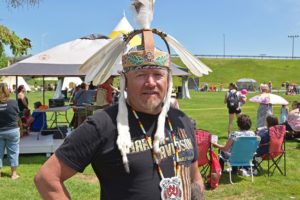Nipissing First Nation extends 2018 fishery season

By Kelly Anne Smith
NIPISSING FIRST NATION—In continuing efforts to regain a healthy walleye population, Nipissing First Nation Fishery will officially be closed September 15 at 9 am for the 2018 season. The closure is until the end of the spring 2019 moratorium.
In the notice to Nipissing First Nation citizens, it states that, “This doesn’t affect Members inherent, treaty-protected rights to harvest fish for subsistence or ceremonial purposes.” Members must call the fisheries office to notify of the intent to harvest.
All commercial gill nets must be lifted as well by September 15 at 9 a.m. There is warning to anyone selling fish harvested under the pretense of subsistence or ceremonial fishing that it will be considered a violation of the fishing laws of Nipissing First Nation.
Nipissing First Nation Chief Scott McLeod says the 2018 season is closing later than last year for the fishers.
“Last year’s closing date was August 31st. This year we allowed an extension of a couple weeks for our fishermen to adjust and get ready for the closure so their families are financially secure and they are ready for the long winter. So, it will be closing on the 15th.”
The Chief cautions that Lake Nipissing still needs protection.
“I hesitate to say it’s getting better so we are opening it up. There is some movement in there but we have to be very prudent on the steps that we take and how long we leave it open.
It’s not so much time as it is harvest levels that we have to monitor. We were slightly lower than we were last year so it allowed for a bit of room but at the same time, even though things are looking better out there, the indications that the fishery is taking a nose dive are put at bay, but we are not out of the woods yet.”
The Nipissing First Nation notice informs that the harvest level is nearing the upper limit of 20,000 kilograms for the commercial fishery 2018 season.
Nipissing First Nation will continue to enforce their Fisheries Law and the Gichi-Naaknigewin says Chief McLeod.
“We have to keep moving in that direction with our fishery’s laws. It could take five or 10 years before we actually see any increases in the amount of harvest. We may be able to move with the size of the fish.”
The Chief was supported in his stance during the July 13 election. He says election debates showed that a majority of community members want to sustainably manage the fishery.
“It became a political issue, a polarizing one, about the fishery and the laws. Some of the people who were opposing the laws thought that the support was there and behind them but it was quite evident in the results of the election that people want good sound management and that we are going in the right direction. That was reaffirmed.”
In 2015, the season closed August 22 after community consultation approved of changes to Nipissing First Nation fishery laws. New regulations reduced the number of allowable gillnets from five to three and increased mesh size of the gillnets so that immature fish could swim out and not be harvested.
This year’s annual spring moratorium on gillnetting ran from April 1 to May 19. There is still a temporary moratorium on the cultural practice of spear fishing.
There are 44 fish species in Lake Nipissing with the sport community fishing Bass, Yellow Perch, Northern Pike and Walleye.


